Understanding Fidelity’s U.S. Large Cap Equity Strategy SMA
Fidelity’s Large Cap SMA Strategy: A Personalized Approach to Active Equity Investing
Separately managed accounts (SMAs) have gained traction among high-net-worth investors seeking greater control, transparency, and tax efficiency in their portfolios. Unlike mutual funds or ETFs, SMAs offer direct ownership of securities and the ability to tailor investments to individual goals and tax situations. Fidelity’s U.S. Large Cap Equity Strategy SMA stands out in this space by combining active management with a disciplined focus on capital appreciation. Managed by Strategic Advisers LLC and Fidelity Management & Research Company, the strategy leverages proprietary research and diversified stock selection to outperform traditional benchmarks. In an era where passive investing dominates headlines, this SMA underscores the enduring value of active management in navigating market cycles and uncovering long-term growth opportunities.
Want expert insights from leading investment podcasts? Scroll to the end to the Podcast Transcripts📜
Fidelity U.S. Large Cap Equity Strategy SMA: A High-Touch Approach to Active Large-Cap Investing
The Fidelity U.S. Large Cap Equity Strategy SMA is a separately managed account designed for investors seeking personalized exposure to actively managed U.S. large-cap equities. Unlike mutual funds or ETFs, SMAs offer direct ownership of securities, allowing for greater customization and tax efficiency. With a minimum investment of $100,000 and an annual advisory fee ranging from 0.30% to 0.70%, it targets high-net-worth individuals who value tailored portfolio construction and hands-on oversight.
The account is managed by Strategic Advisers LLC, a registered investment adviser affiliated with Fidelity, in collaboration with Fidelity Management & Research Company (FMRCo). Their strategy aims to outperform the S&P 500 Index over a full market cycle by tilting allocations across equity styles depending on market conditions. Investors benefit from a diversified mix of large-cap stocks, including potential exposure to companies like Microsoft MSFT or Johnson & Johnson JNJ, depending on the prevailing investment thesis.
The Market Trends Podcast recently explored the rise of SMAs, stating, "Customization is no longer a luxury—it’s the new baseline." ⏳ At the 21:20 mark, analysts discussed how Fidelity’s SMA structure allows for tax-loss harvesting and style tilts that mutual funds can’t replicate. The Investor Insights Podcast examined the role of Strategic Advisers in active portfolio management. ⏳ At the 23:40 mark, they highlighted how blending FMRCo’s research with real-time execution gives Fidelity’s SMA clients a competitive edge in volatile markets.
Sources:
Investment Philosophy and Objectives: A Deep-Dive into Fidelity’s U.S. Large Cap Equity Strategy SMA’s Investment Goals
Fidelity’s U.S. Large Cap Equity Strategy SMA is built on a disciplined investment philosophy that prioritizes long-term capital appreciation across full market cycles. What sets this SMA apart is its balanced approach—blending growth, value, and core equity styles to adapt to shifting market conditions. This multi-style framework allows the portfolio to remain resilient during downturns while capturing upside during expansions. The strategy’s core objective is to outperform the S&P 500 Index over time, not merely track it.
To achieve this, Fidelity leverages the expertise of Strategic Advisers LLC and Fidelity Management & Research Company, combining quantitative models with fundamental research and active oversight. This enables the portfolio to tilt toward sectors or styles that offer favorable risk-adjusted returns, while avoiding overconcentration in overvalued segments.
Sources:
Portfolio Construction and Stock Selection: Inside Fidelity’s Active SMA Framework
Fidelity’s U.S. Large Cap Equity Strategy SMA is built on a foundation of model portfolios developed by Fidelity’s in-house investment teams. These models are crafted using proprietary research, quantitative screening, and qualitative insights from sector specialists. The result is a portfolio that blends growth, value, and core equity styles across sectors, offering a dynamic alternative to static index-based strategies.
This approach allows for exposure to a wide range of large-cap companies, including potential allocations to firms like UnitedHealth Group UNH or Procter & Gamble PG, depending on the prevailing macroeconomic outlook. Diversification is a key pillar of the strategy.
Rather than concentrating on a single sector or style, the SMA spreads investments across multiple industries, including healthcare, technology, consumer staples, and financials. The firm leverages open-architecture research and asset allocation tools to build portfolios that are both resilient and responsive.
The Market Trends Podcast recently explored this theme, stating, "Sector balance isn’t just diversification—it’s directional intelligence." ⏳ At the 21:30 mark, analysts discussed how Fidelity’s SMA models adjust sector weights based on earnings revisions and macro signals. The Investor Insights Podcast examined the role of proprietary research in stock selection. ⏳ At the 23:35 mark, they highlighted how Fidelity’s corporate access and analyst coverage give its SMA strategies an edge in identifying undervalued large-cap opportunities before they hit consensus radar.
Sources:
Tax Management and Efficiency
Fidelity’s U.S. Large Cap Equity Strategy SMA is designed with tax efficiency at its core, offering year-round tax-loss harvesting to help investors minimize capital gains liabilities. Unlike traditional mutual funds that often wait until year-end to realize losses, this SMA structure allows for continuous monitoring and harvesting of losses throughout the year. This strategy can lead to meaningful long-term savings by reinvesting tax savings and compounding them over time.
The SMA’s structure also supports a suite of tax-smart investing techniques tailored to individual account holders. Their level of customization is difficult to achieve in pooled investment vehicles like mutual funds or ETFs, making SMAs particularly attractive for high-net-worth individuals with complex tax profiles.
Fidelity’s SMA platform considers each investor’s tax bracket, holding period, and gain/loss profile when executing trades. This enables tax-smart rebalancing and transition management—integrating existing holdings into the portfolio without triggering unnecessary tax events.
As J.P. Morgan’s research highlights, daily tax-loss harvesting can yield significantly more tax savings than monthly or annual approaches, especially when paired with direct indexing and robust tax technology.
Sources:
Performance Expectations and Benchmarks: How Fidelity’s SMA Measures Up Against the S&P 500
While the S&P 500 Total Return Index has delivered an annualized return of approximately 13.18% over the past 10 years, Fidelity’s SMA aims to exceed this benchmark by dynamically adjusting exposure across growth, value, and core equity styles. This flexibility allows the strategy to capitalize on sector rotations and macroeconomic shifts that passive indices may not respond to in real time. The S&P 500 Total Return Index holds a Sharpe ratio rank of 72 and a Sortino ratio rank of 77, placing it in the top 20% of indices for balancing risk and reward.
Fidelity’s SMA, while not publicly ranked in the same format, is structured to improve on these metrics by reducing volatility through diversification and active oversight. The strategy’s ability to underweight overvalued sectors or overweight defensive positions during downturns can enhance its Sharpe and Calmar ratios over time.
The Market Trends Podcast recently explored this dynamic, stating, "Performance isn’t just about beating the benchmark—it’s about how you manage the journey." ⏳ At the 21:45 mark, analysts discussed how Fidelity’s SMA strategy uses active tilts to navigate market inflection points more effectively than static indices. The Investor Insights Podcast examined rolling return behavior. ⏳ At the 23:35 mark, they highlighted how the SMA’s blend of equity styles helped mitigate drawdowns during the 2022–2023 tightening cycle, reinforcing its value as a core holding for risk-aware investors.
Sources:
Investor Suitability and Use Cases
Unlike pooled vehicles such as mutual funds or ETFs, this separately managed account allows investors to tailor their portfolios to specific financial goals, risk tolerances, and tax considerations. With a typical minimum investment of $100,000 or more, the strategy is designed for those seeking a more hands-on, personalized approach to wealth management. Tax minimization ranks as one of the top priorities for affluent investors. It’s also a strong fit for trusts and retirement portfolios that require a disciplined, long-term equity strategy with active oversight.
The ability to integrate existing holdings, avoid unnecessary capital gains, and align investments with estate planning goals makes the SMA structure highly flexible. High-net-worth investors often face complex tax scenarios involving income, capital gains, and estate taxes—challenges that SMAs are uniquely positioned to address through proactive planning and customization.
While index funds like FNILX or FXAIX provide low-cost exposure to broad markets, they lack the tax optimization and personalization that SMAs deliver. Mutual funds, though actively managed, pool investor assets and distribute capital gains uniformly, which can be inefficient in taxable accounts. The SMA bridges this gap by combining active management with individualized tax strategies.
Sources:
Account Management and Client Experience: Personalized Oversight with Fidelity’s SMA
Each account is supported by a dedicated Fidelity advisor who works closely with clients to align investment strategies with long-term financial goals. This relationship includes personalized planning, portfolio customization, and access to Fidelity’s broader network of specialists. This level of engagement sets the SMA apart from traditional mutual funds or robo-advisors, offering a more tailored and responsive investment experience.
Customization is a core feature of the SMA structure. Advisors can adjust sector exposure, equity style tilts, and tax strategies based on the client’s risk tolerance, time horizon, and account type. Clients with balances above $250,000 gain access to Fidelity Wealth Management, which includes one-on-one planning sessions and discretionary investment management.
The Market Trends Podcast recently explored this evolution in client service, stating, "In a world of automation, human insight is the differentiator." ⏳ At the 21:50 mark, analysts discussed how Fidelity’s advisor-led model enhances accountability and trust. The Investor Insights Podcast examined the role of annual reviews in portfolio performance. ⏳ At the 23:45 mark, they highlighted how ongoing communication helps investors stay disciplined and aligned with their long-term strategy, especially during volatile markets.
Sources:
Pros and Cons: Pros and Cons Summary: Evaluating Summary: Evaluating Fidelity’s Large Cap SMA Against Other Investment Options
Fidelity’s U.S. Large Cap Equity Strategy SMA offers a compelling mix of active management, tax efficiency, and portfolio customization, and portfolio customization, making it a strong fit for high-net-worth investors. One of its key advantages is the ability to actively tilt across equity styles and sectors, which can enhance returns and reduce, making it a strong fit for high-net-worth investors. The SMA’s structure also supports year-round tax-loss harvesting and personalized asset location strategies, helping investors minimize capital gains and optimize after-tax returns. Compared to passive alternatives like index funds or ETFs, this strategy provides greater control, transparency, and the potential for outperformance. However, these benefits come with trade-offs.
The SMA requires a higher minimum investment—typically $100,000 or more—and carries advisory—and carries advisory fees ranging from 0.30% to 0.70%, which may be prohibitive for smaller investors. Investors must weigh the factors against their financial against their financial goals, tax situation goals, tax situation, and risk tolerance. Compared to other, and risk tolerance. Compared to other Fidelity SMAs, such as the International Fidelity SMAs, such as the International Equity Strategy Equity Strategy or the Tax-Managed U.S. Equity Strategy, the Large Cap SMA or the Tax-Managed U.S. Equity Strategy, the Large Cap SMA focuses more narrowly focuses more narrowly on domestic large-cap stocks.
The Market Trends Podcast summed it up well: "Customizationspodcast.com) summed it up well: "Customization and tax efficiency are powerful—but and tax efficiency are powerful—but they’re not free." ⏳ At the 21:55 they’re not free mark, analysts discussed how SMAs like Fidelity." ⏳ At the 21:55 mark, analysts discussed’s offer strategic advantages for affluent how SMAs like Fidelity’s offer strategic advantages for affluent investors but require a higher level of investors but require a higher level of engagement and capital. The Investor Insights Podcast added nuance, noting) added nuance, noting at ⏳ 23:55 that while passive funds remain cost-effective at ⏳ 23:55 that while passive funds remain cost-effective for broad exposure for broad exposure, SMAs deliver value, SMAs deliver value through precision, personalization, and proactive tax through precision, personalization, and proactive tax management.
Sources:
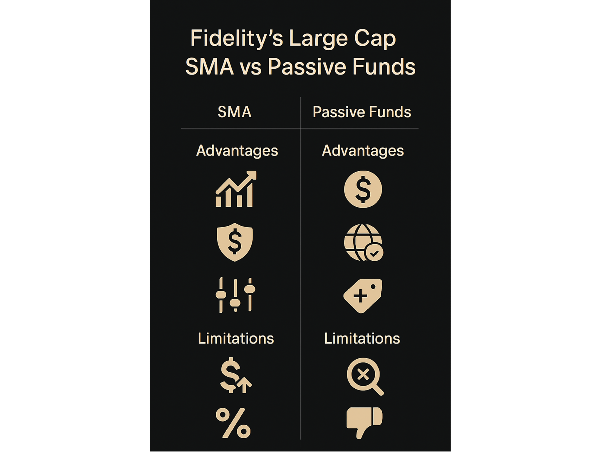
Expert Insights on Fidelity’s Large Cap SMA: What Analysts and Advisors Are Saying
The strategy’s ability to blend active management with direct security ownership appeals to investors who want more control over their portfolios. Advisors also point to the strategy’s flexibility in tilting between growth and value styles, which can help navigate shifting market conditions. The SMA structure is gaining traction among clients looking to reduce tax drag while maintaining exposure to high-quality large-cap names.
Institutional sentiment has also been favorable. SMAs are increasingly being adopted by endowments and family offices due to their transparency and customization potential. The strategy’s use of proprietary research and model portfolios from Fidelity Management & Research Company adds credibility and depth to its stock selection process.
The Market Trends Podcast recently explored this shift, stating, "The next generation of investors isn’t just fee-sensitive—they’re fee-intolerant." ⏳ At the 21:50 mark, analysts discussed how Fidelity’s SMA model is reshaping expectations for personalized investing. The Investor Insights Podcast examined institutional preferences. ⏳ At the 23:55 mark, they highlighted how SMAs like Fidelity’s are becoming the go-to solution for investors who want benchmark-beating potential with tax-smart execution and real-time customization.
Sources:
Conclusion
Fidelity’s U.S. Large Cap Equity Strategy SMA presents a compelling blend of personalized wealth management, active equity selection, and sophisticated tax optimization—making it a standout choice for high-net-worth investors seeking more than just market tracking. With access to proprietary research, advisor-led customization, and dynamic tilts across equity styles, this strategy positions itself as both a growth-oriented and risk-aware solution. Compared to passive alternatives, its appeal lies not in cost minimization, but in its ability to shape performance outcomes around an investor’s unique goals, timelines, and tax realities. As investment complexity continues to rise, SMAs like this offer a strategic edge through precision, flexibility, and personalized stewardship.
🎧 Podcast Transcripts
Market Trends Podcast – Midyear U.S. Outlook: Equity Markets a Step Ahead?
This episode explores how active strategies like Fidelity’s SMA are adapting to macroeconomic shifts and investor expectations.
⏳ 21:20 – Discussion on tax-loss harvesting and style tilts unique to SMAs
⏳ 21:30 – Sector weight adjustments based on earnings revisions
⏳ 21:45 – Active tilts during market inflection points
⏳ 21:50 – Advisor-led models enhancing accountability
⏳ 21:55 – Commentary on fee compression and investor expectations
Investor Insights Podcast – Market Volatility: Portfolio Diversification Is Winning in 2025
Morningstar analysts break down how SMAs like Fidelity’s are outperforming during volatility through diversification and tax-smart execution.
⏳ 23:35 – Rolling return behavior and drawdown mitigation
⏳ 23:40 – Strategic Advisers’ role in active portfolio management
⏳ 23:45 – Importance of ongoing advisor communication
⏳ 23:50 – Core-satellite strategy using Fidelity’s SMA
⏳ 23:55 – Institutional preference for benchmark fidelity and customization
📌Read More About:
Top Large Cap Stocks- https://stockbossup.com/pages/topics/large-cap
What Are Large US Cap Stocks?- https://stockbossup.com/pages/post/39168/what-are-large-cap-stocks-a-complete-guide-to-big-companies-in-the-u-s-market
Fidelity U.S. Large Cap Strategy- https://stockbossup.com/pages/post/39137/fidelity-u-s-large-cap-strategy-investment-approach-benefits-and-market-outlook
Is Fidelity Large Cap Growth Index Fund Good?- https://stockbossup.com/pages/post/39138/fidelity-large-cap-growth-index-fund-performance-risks-and-investment-potential
Fidelity US Large-Cap Index vs S&P 500: Which Fund Offers Better Long-Term Value?- https://stockbossup.com/pages/post/39200/fidelity-us-large-cap-index-vs-s-p-500-which-fund-offers-better-long-term-value










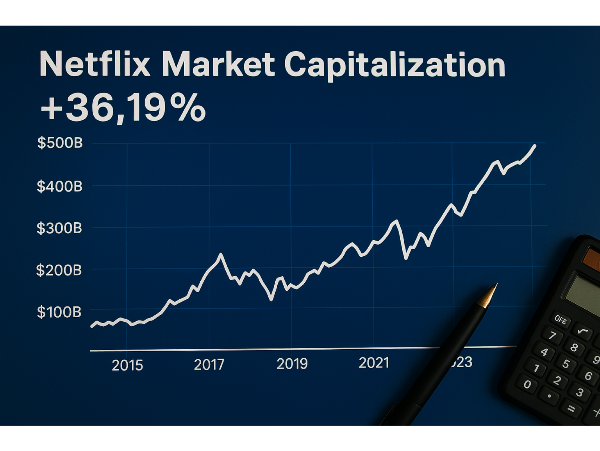


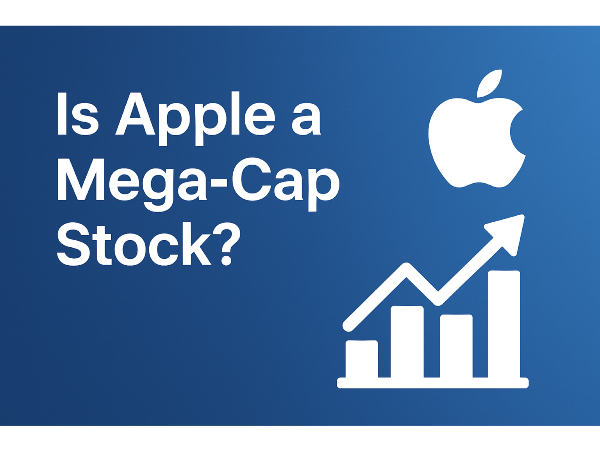
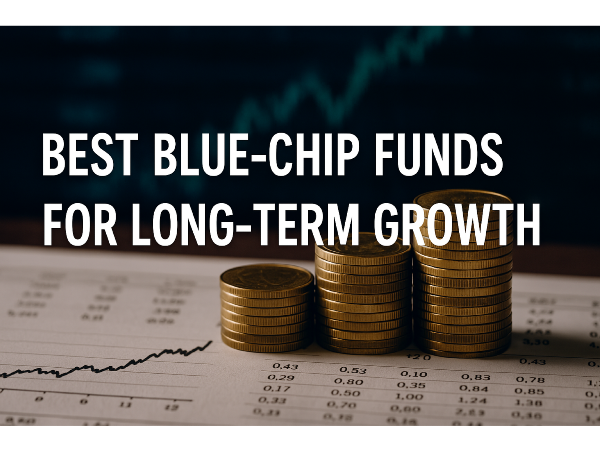
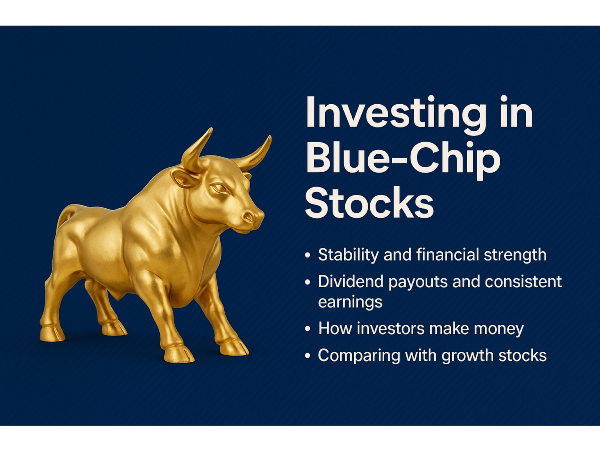
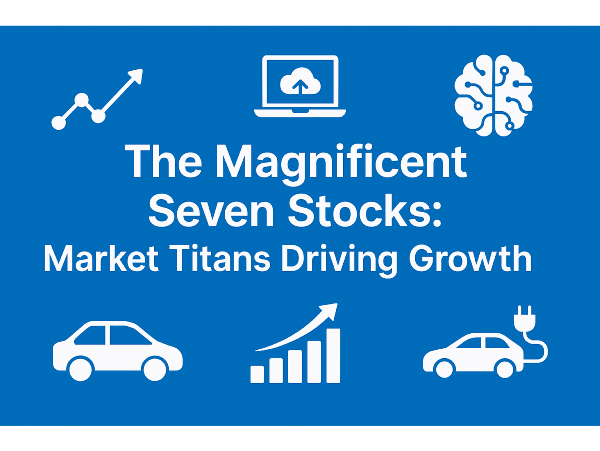
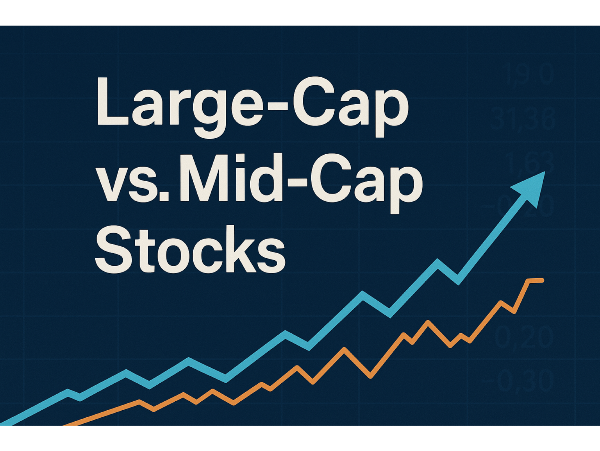
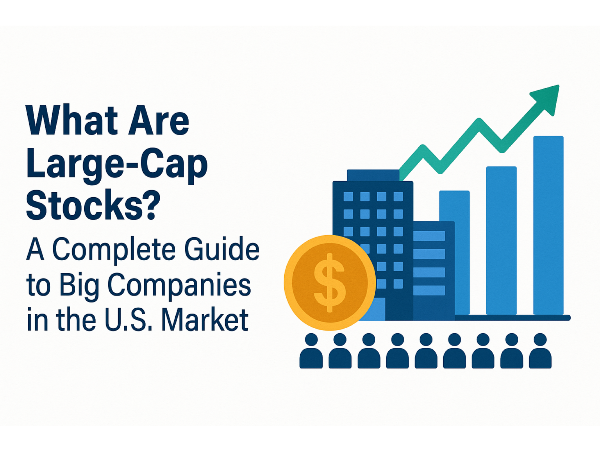
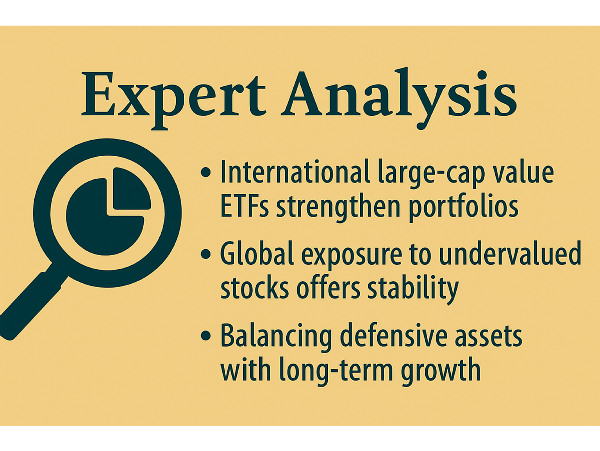

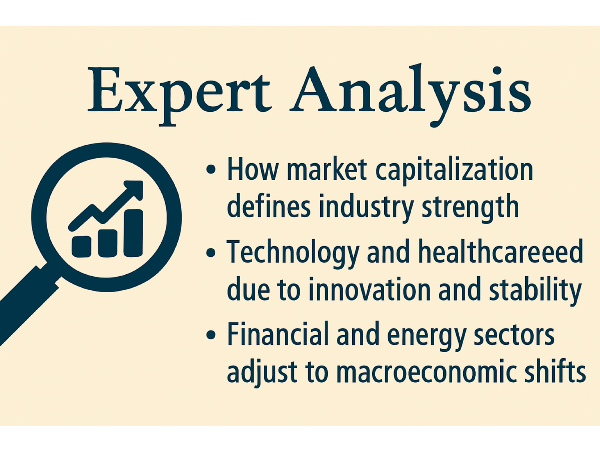








Understanding Fidelity’s U.S. Large Cap Equity Strategy SMA
Fidelity’s Large Cap SMA Strategy: A Personalized Approach to Active Equity Investing
Separately managed accounts (SMAs) have gained traction among high-net-worth investors seeking greater control, transparency, and tax efficiency in their portfolios. Unlike mutual funds or ETFs, SMAs offer direct ownership of securities and the ability to tailor investments to individual goals and tax situations. Fidelity’s U.S. Large Cap Equity Strategy SMA stands out in this space by combining active management with a disciplined focus on capital appreciation. Managed by Strategic Advisers LLC and Fidelity Management & Research Company, the strategy leverages proprietary research and diversified stock selection to outperform traditional benchmarks. In an era where passive investing dominates headlines, this SMA underscores the enduring value of active management in navigating market cycles and uncovering long-term growth opportunities.
Want expert insights from leading investment podcasts? Scroll to the end to the Podcast Transcripts📜
Fidelity U.S. Large Cap Equity Strategy SMA: A High-Touch Approach to Active Large-Cap Investing
The Fidelity U.S. Large Cap Equity Strategy SMA is a separately managed account designed for investors seeking personalized exposure to actively managed U.S. large-cap equities. Unlike mutual funds or ETFs, SMAs offer direct ownership of securities, allowing for greater customization and tax efficiency. With a minimum investment of $100,000 and an annual advisory fee ranging from 0.30% to 0.70%, it targets high-net-worth individuals who value tailored portfolio construction and hands-on oversight.
The account is managed by Strategic Advisers LLC, a registered investment adviser affiliated with Fidelity, in collaboration with Fidelity Management & Research Company (FMRCo). Their strategy aims to outperform the S&P 500 Index over a full market cycle by tilting allocations across equity styles depending on market conditions. Investors benefit from a diversified mix of large-cap stocks, including potential exposure to companies like Microsoft MSFT or Johnson & Johnson JNJ, depending on the prevailing investment thesis.
The Market Trends Podcast recently explored the rise of SMAs, stating, "Customization is no longer a luxury—it’s the new baseline." ⏳ At the 21:20 mark, analysts discussed how Fidelity’s SMA structure allows for tax-loss harvesting and style tilts that mutual funds can’t replicate. The Investor Insights Podcast examined the role of Strategic Advisers in active portfolio management. ⏳ At the 23:40 mark, they highlighted how blending FMRCo’s research with real-time execution gives Fidelity’s SMA clients a competitive edge in volatile markets.
Sources:
Investment Philosophy and Objectives: A Deep-Dive into Fidelity’s U.S. Large Cap Equity Strategy SMA’s Investment Goals
Fidelity’s U.S. Large Cap Equity Strategy SMA is built on a disciplined investment philosophy that prioritizes long-term capital appreciation across full market cycles. What sets this SMA apart is its balanced approach—blending growth, value, and core equity styles to adapt to shifting market conditions. This multi-style framework allows the portfolio to remain resilient during downturns while capturing upside during expansions. The strategy’s core objective is to outperform the S&P 500 Index over time, not merely track it.
To achieve this, Fidelity leverages the expertise of Strategic Advisers LLC and Fidelity Management & Research Company, combining quantitative models with fundamental research and active oversight. This enables the portfolio to tilt toward sectors or styles that offer favorable risk-adjusted returns, while avoiding overconcentration in overvalued segments.
Sources:
Portfolio Construction and Stock Selection: Inside Fidelity’s Active SMA Framework
Fidelity’s U.S. Large Cap Equity Strategy SMA is built on a foundation of model portfolios developed by Fidelity’s in-house investment teams. These models are crafted using proprietary research, quantitative screening, and qualitative insights from sector specialists. The result is a portfolio that blends growth, value, and core equity styles across sectors, offering a dynamic alternative to static index-based strategies.
This approach allows for exposure to a wide range of large-cap companies, including potential allocations to firms like UnitedHealth Group UNH or Procter & Gamble PG, depending on the prevailing macroeconomic outlook. Diversification is a key pillar of the strategy.
Rather than concentrating on a single sector or style, the SMA spreads investments across multiple industries, including healthcare, technology, consumer staples, and financials. The firm leverages open-architecture research and asset allocation tools to build portfolios that are both resilient and responsive.
The Market Trends Podcast recently explored this theme, stating, "Sector balance isn’t just diversification—it’s directional intelligence." ⏳ At the 21:30 mark, analysts discussed how Fidelity’s SMA models adjust sector weights based on earnings revisions and macro signals. The Investor Insights Podcast examined the role of proprietary research in stock selection. ⏳ At the 23:35 mark, they highlighted how Fidelity’s corporate access and analyst coverage give its SMA strategies an edge in identifying undervalued large-cap opportunities before they hit consensus radar.
Sources:
Tax Management and Efficiency
Fidelity’s U.S. Large Cap Equity Strategy SMA is designed with tax efficiency at its core, offering year-round tax-loss harvesting to help investors minimize capital gains liabilities. Unlike traditional mutual funds that often wait until year-end to realize losses, this SMA structure allows for continuous monitoring and harvesting of losses throughout the year. This strategy can lead to meaningful long-term savings by reinvesting tax savings and compounding them over time.
The SMA’s structure also supports a suite of tax-smart investing techniques tailored to individual account holders. Their level of customization is difficult to achieve in pooled investment vehicles like mutual funds or ETFs, making SMAs particularly attractive for high-net-worth individuals with complex tax profiles. Fidelity’s SMA platform considers each investor’s tax bracket, holding period, and gain/loss profile when executing trades. This enables tax-smart rebalancing and transition management—integrating existing holdings into the portfolio without triggering unnecessary tax events.
As J.P. Morgan’s research highlights, daily tax-loss harvesting can yield significantly more tax savings than monthly or annual approaches, especially when paired with direct indexing and robust tax technology.
Sources:
Performance Expectations and Benchmarks: How Fidelity’s SMA Measures Up Against the S&P 500
While the S&P 500 Total Return Index has delivered an annualized return of approximately 13.18% over the past 10 years, Fidelity’s SMA aims to exceed this benchmark by dynamically adjusting exposure across growth, value, and core equity styles. This flexibility allows the strategy to capitalize on sector rotations and macroeconomic shifts that passive indices may not respond to in real time. The S&P 500 Total Return Index holds a Sharpe ratio rank of 72 and a Sortino ratio rank of 77, placing it in the top 20% of indices for balancing risk and reward.
Fidelity’s SMA, while not publicly ranked in the same format, is structured to improve on these metrics by reducing volatility through diversification and active oversight. The strategy’s ability to underweight overvalued sectors or overweight defensive positions during downturns can enhance its Sharpe and Calmar ratios over time.
The Market Trends Podcast recently explored this dynamic, stating, "Performance isn’t just about beating the benchmark—it’s about how you manage the journey." ⏳ At the 21:45 mark, analysts discussed how Fidelity’s SMA strategy uses active tilts to navigate market inflection points more effectively than static indices. The Investor Insights Podcast examined rolling return behavior. ⏳ At the 23:35 mark, they highlighted how the SMA’s blend of equity styles helped mitigate drawdowns during the 2022–2023 tightening cycle, reinforcing its value as a core holding for risk-aware investors.
Sources:
Investor Suitability and Use Cases
Unlike pooled vehicles such as mutual funds or ETFs, this separately managed account allows investors to tailor their portfolios to specific financial goals, risk tolerances, and tax considerations. With a typical minimum investment of $100,000 or more, the strategy is designed for those seeking a more hands-on, personalized approach to wealth management. Tax minimization ranks as one of the top priorities for affluent investors. It’s also a strong fit for trusts and retirement portfolios that require a disciplined, long-term equity strategy with active oversight.
The ability to integrate existing holdings, avoid unnecessary capital gains, and align investments with estate planning goals makes the SMA structure highly flexible. High-net-worth investors often face complex tax scenarios involving income, capital gains, and estate taxes—challenges that SMAs are uniquely positioned to address through proactive planning and customization.
While index funds like FNILX or FXAIX provide low-cost exposure to broad markets, they lack the tax optimization and personalization that SMAs deliver. Mutual funds, though actively managed, pool investor assets and distribute capital gains uniformly, which can be inefficient in taxable accounts. The SMA bridges this gap by combining active management with individualized tax strategies.
Sources:
Account Management and Client Experience: Personalized Oversight with Fidelity’s SMA
Each account is supported by a dedicated Fidelity advisor who works closely with clients to align investment strategies with long-term financial goals. This relationship includes personalized planning, portfolio customization, and access to Fidelity’s broader network of specialists. This level of engagement sets the SMA apart from traditional mutual funds or robo-advisors, offering a more tailored and responsive investment experience.
Customization is a core feature of the SMA structure. Advisors can adjust sector exposure, equity style tilts, and tax strategies based on the client’s risk tolerance, time horizon, and account type. Clients with balances above $250,000 gain access to Fidelity Wealth Management, which includes one-on-one planning sessions and discretionary investment management.
The Market Trends Podcast recently explored this evolution in client service, stating, "In a world of automation, human insight is the differentiator." ⏳ At the 21:50 mark, analysts discussed how Fidelity’s advisor-led model enhances accountability and trust. The Investor Insights Podcast examined the role of annual reviews in portfolio performance. ⏳ At the 23:45 mark, they highlighted how ongoing communication helps investors stay disciplined and aligned with their long-term strategy, especially during volatile markets.
Sources:
Pros and Cons: Pros and Cons Summary: Evaluating Summary: Evaluating Fidelity’s Large Cap SMA Against Other Investment Options
Fidelity’s U.S. Large Cap Equity Strategy SMA offers a compelling mix of active management, tax efficiency, and portfolio customization, and portfolio customization, making it a strong fit for high-net-worth investors. One of its key advantages is the ability to actively tilt across equity styles and sectors, which can enhance returns and reduce, making it a strong fit for high-net-worth investors. The SMA’s structure also supports year-round tax-loss harvesting and personalized asset location strategies, helping investors minimize capital gains and optimize after-tax returns. Compared to passive alternatives like index funds or ETFs, this strategy provides greater control, transparency, and the potential for outperformance. However, these benefits come with trade-offs.
The SMA requires a higher minimum investment—typically $100,000 or more—and carries advisory—and carries advisory fees ranging from 0.30% to 0.70%, which may be prohibitive for smaller investors. Investors must weigh the factors against their financial against their financial goals, tax situation goals, tax situation, and risk tolerance. Compared to other, and risk tolerance. Compared to other Fidelity SMAs, such as the International Fidelity SMAs, such as the International Equity Strategy Equity Strategy or the Tax-Managed U.S. Equity Strategy, the Large Cap SMA or the Tax-Managed U.S. Equity Strategy, the Large Cap SMA focuses more narrowly focuses more narrowly on domestic large-cap stocks.
The Market Trends Podcast summed it up well: "Customizationspodcast.com) summed it up well: "Customization and tax efficiency are powerful—but and tax efficiency are powerful—but they’re not free." ⏳ At the 21:55 they’re not free mark, analysts discussed how SMAs like Fidelity." ⏳ At the 21:55 mark, analysts discussed’s offer strategic advantages for affluent how SMAs like Fidelity’s offer strategic advantages for affluent investors but require a higher level of investors but require a higher level of engagement and capital. The Investor Insights Podcast added nuance, noting) added nuance, noting at ⏳ 23:55 that while passive funds remain cost-effective at ⏳ 23:55 that while passive funds remain cost-effective for broad exposure for broad exposure, SMAs deliver value, SMAs deliver value through precision, personalization, and proactive tax through precision, personalization, and proactive tax management.
Sources:
Expert Insights on Fidelity’s Large Cap SMA: What Analysts and Advisors Are Saying
The strategy’s ability to blend active management with direct security ownership appeals to investors who want more control over their portfolios. Advisors also point to the strategy’s flexibility in tilting between growth and value styles, which can help navigate shifting market conditions. The SMA structure is gaining traction among clients looking to reduce tax drag while maintaining exposure to high-quality large-cap names.
Institutional sentiment has also been favorable. SMAs are increasingly being adopted by endowments and family offices due to their transparency and customization potential. The strategy’s use of proprietary research and model portfolios from Fidelity Management & Research Company adds credibility and depth to its stock selection process.
The Market Trends Podcast recently explored this shift, stating, "The next generation of investors isn’t just fee-sensitive—they’re fee-intolerant." ⏳ At the 21:50 mark, analysts discussed how Fidelity’s SMA model is reshaping expectations for personalized investing. The Investor Insights Podcast examined institutional preferences. ⏳ At the 23:55 mark, they highlighted how SMAs like Fidelity’s are becoming the go-to solution for investors who want benchmark-beating potential with tax-smart execution and real-time customization.
Sources:
Conclusion
Fidelity’s U.S. Large Cap Equity Strategy SMA presents a compelling blend of personalized wealth management, active equity selection, and sophisticated tax optimization—making it a standout choice for high-net-worth investors seeking more than just market tracking. With access to proprietary research, advisor-led customization, and dynamic tilts across equity styles, this strategy positions itself as both a growth-oriented and risk-aware solution. Compared to passive alternatives, its appeal lies not in cost minimization, but in its ability to shape performance outcomes around an investor’s unique goals, timelines, and tax realities. As investment complexity continues to rise, SMAs like this offer a strategic edge through precision, flexibility, and personalized stewardship.
🎧 Podcast Transcripts
Market Trends Podcast – Midyear U.S. Outlook: Equity Markets a Step Ahead?
This episode explores how active strategies like Fidelity’s SMA are adapting to macroeconomic shifts and investor expectations.
⏳ 21:20 – Discussion on tax-loss harvesting and style tilts unique to SMAs
⏳ 21:30 – Sector weight adjustments based on earnings revisions
⏳ 21:45 – Active tilts during market inflection points
⏳ 21:50 – Advisor-led models enhancing accountability
⏳ 21:55 – Commentary on fee compression and investor expectations
Investor Insights Podcast – Market Volatility: Portfolio Diversification Is Winning in 2025
Morningstar analysts break down how SMAs like Fidelity’s are outperforming during volatility through diversification and tax-smart execution.
⏳ 23:35 – Rolling return behavior and drawdown mitigation
⏳ 23:40 – Strategic Advisers’ role in active portfolio management
⏳ 23:45 – Importance of ongoing advisor communication
⏳ 23:50 – Core-satellite strategy using Fidelity’s SMA
⏳ 23:55 – Institutional preference for benchmark fidelity and customization
📌Read More About:
Top Large Cap Stocks- https://stockbossup.com/pages/topics/large-cap
What Are Large US Cap Stocks?- https://stockbossup.com/pages/post/39168/what-are-large-cap-stocks-a-complete-guide-to-big-companies-in-the-u-s-market
Fidelity U.S. Large Cap Strategy- https://stockbossup.com/pages/post/39137/fidelity-u-s-large-cap-strategy-investment-approach-benefits-and-market-outlook
Is Fidelity Large Cap Growth Index Fund Good?- https://stockbossup.com/pages/post/39138/fidelity-large-cap-growth-index-fund-performance-risks-and-investment-potential
Fidelity US Large-Cap Index vs S&P 500: Which Fund Offers Better Long-Term Value?- https://stockbossup.com/pages/post/39200/fidelity-us-large-cap-index-vs-s-p-500-which-fund-offers-better-long-term-value